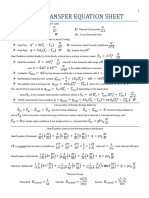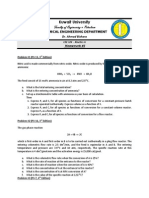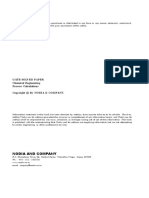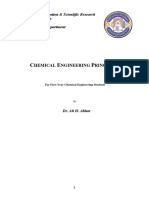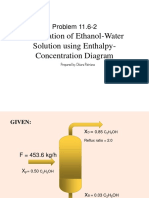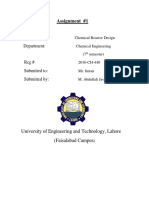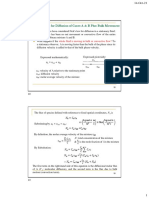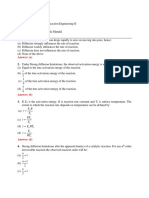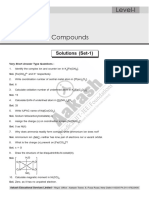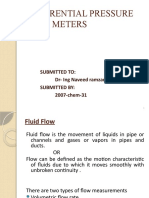0% found this document useful (0 votes)
483 views2 pagesSolution:: Cosh Cosh 1 Cosh Cosh
1) The concentration at L/3 is approximately half the concentration at the pore mouth, which is 0.4827 g mol/dm3.
2) For the effectiveness factor to be 0.9, the pore length must be reduced to 1x10-3 cm, which is 4 times smaller than the original length.
3) The solution uses equations for concentration distribution and effectiveness factor in terms of Thiele modulus to calculate the concentration at L/3 and required pore length for 0.9 effectiveness factor, without using given values for concentration or diffusion coefficient.
Uploaded by
Vaibhav GuptaCopyright
© © All Rights Reserved
We take content rights seriously. If you suspect this is your content, claim it here.
Available Formats
Download as PDF, TXT or read online on Scribd
0% found this document useful (0 votes)
483 views2 pagesSolution:: Cosh Cosh 1 Cosh Cosh
1) The concentration at L/3 is approximately half the concentration at the pore mouth, which is 0.4827 g mol/dm3.
2) For the effectiveness factor to be 0.9, the pore length must be reduced to 1x10-3 cm, which is 4 times smaller than the original length.
3) The solution uses equations for concentration distribution and effectiveness factor in terms of Thiele modulus to calculate the concentration at L/3 and required pore length for 0.9 effectiveness factor, without using given values for concentration or diffusion coefficient.
Uploaded by
Vaibhav GuptaCopyright
© © All Rights Reserved
We take content rights seriously. If you suspect this is your content, claim it here.
Available Formats
Download as PDF, TXT or read online on Scribd
/ 2






